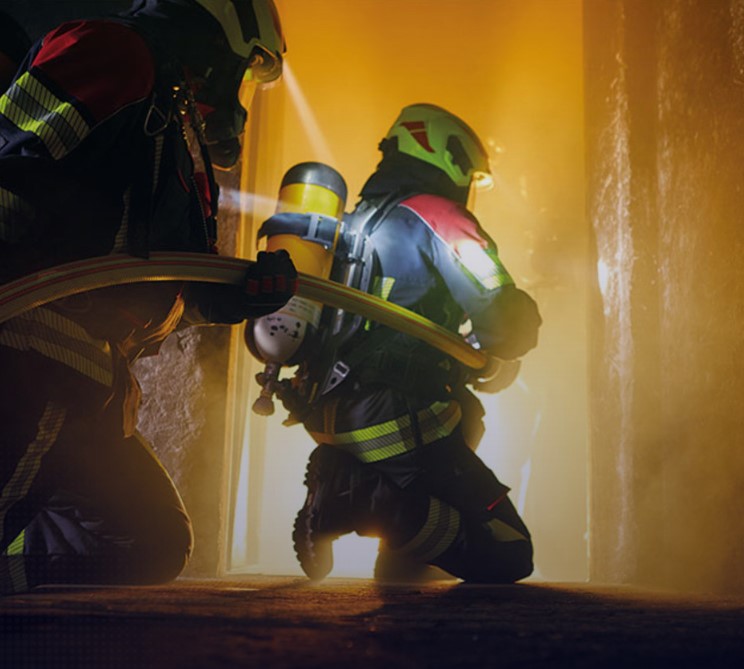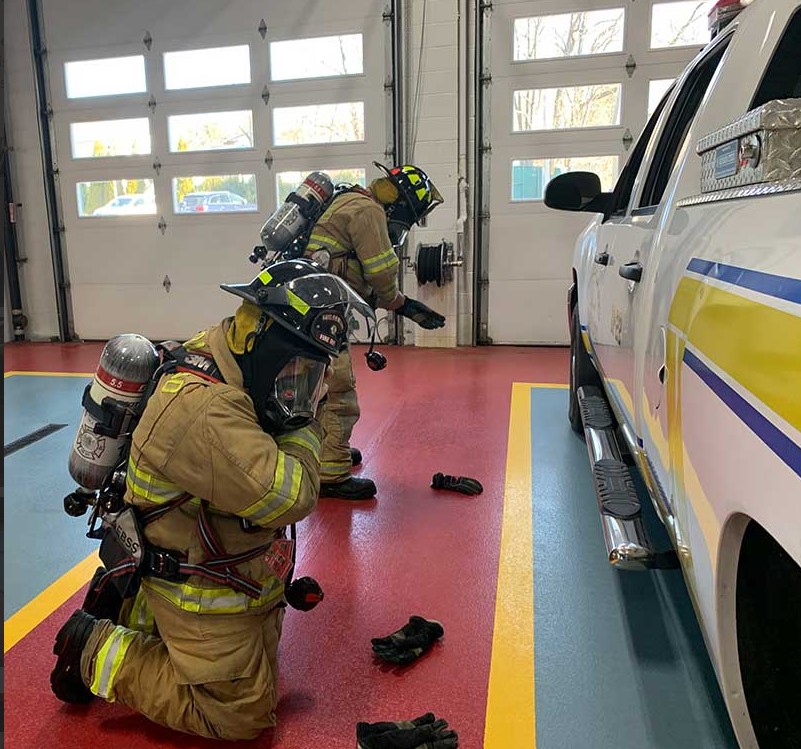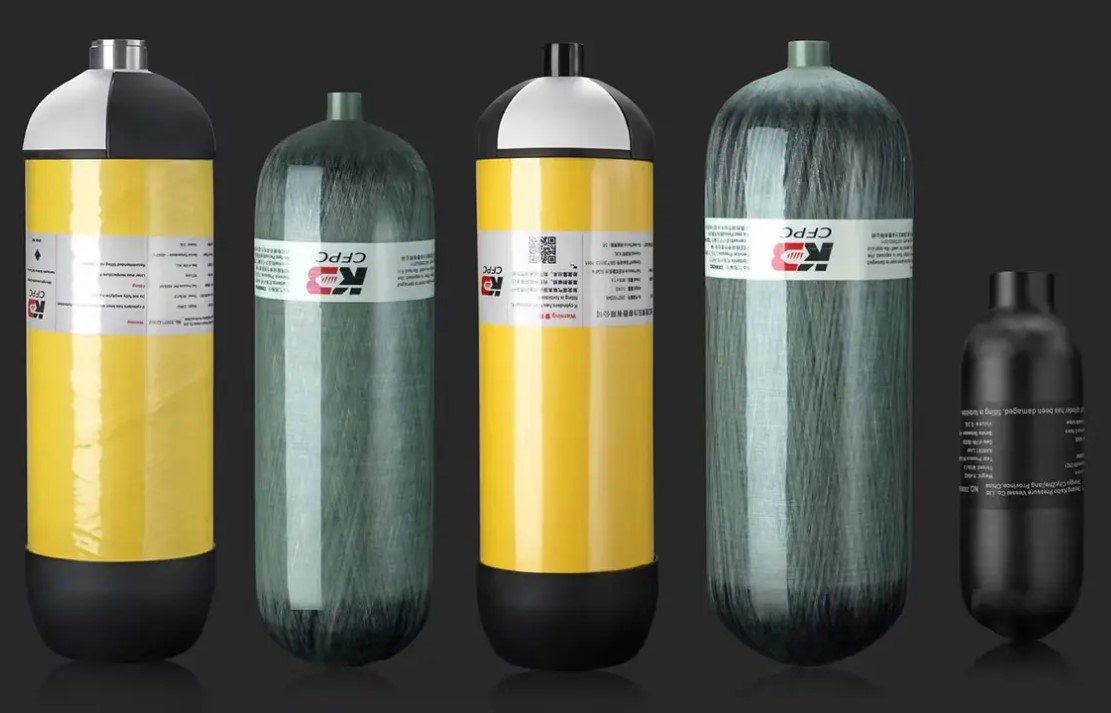For firefighters and other emergency responders who rely on Self-Contained Breathing Apparatus (SCBA) to navigate hazardous environments, every ounce counts. The weight of the SCBA system can significantly impact mobility, endurance, and overall safety during critical operations. This is where carbon fiber composite cylinders come in, revolutionizing the world of SCBA technology.
A Lighter Load for Enhanced Performance
Traditional SCBA cylinders are typically made of steel, making them heavy and cumbersome. Carbon fiber composite cylinders, on the other hand, offer a game-changing advantage. By replacing steel with a composite material that combines carbon fibers with a resin matrix, these cylinders achieve a significantly lighter weight – often exceeding a 50% reduction compared to their steel counterparts. This translates to a lighter SCBA system overall, reducing strain on the wearer’s back, shoulders, and legs. Improved mobility allows firefighters to move more freely and efficiently within burning buildings or other hazardous zones, potentially saving valuable time and energy during rescue efforts.
Beyond Weight: A Boon for User Comfort and Safety
The benefits of carbon fiber composite cylinders extend beyond weight reduction. The lighter design translates to increased user comfort, especially during extended deployments. Firefighters can now operate for longer periods without experiencing excessive fatigue, allowing them to perform their duties more effectively. Additionally, some composite cylinders are designed with enhanced safety features. Flame-resistant materials and impact protection provide an extra layer of security for SCBA users in high-heat and high-risk environments.
Durability and Cost Considerations: A Long-Term Investment
While the initial cost of carbon fiber composite cylinders may be higher than steel cylinders, their extended service life makes them a worthwhile investment in the long run. With proper care and maintenance, these cylinders can last for 15 years or more, significantly reducing replacement costs over time. Additionally, their high strength-to-weight ratio and resistance to corrosion, unlike steel, minimizes the need for frequent replacements due to wear and tear.
Maintaining Peak Performance: Inspection and Maintenance
Just like any SCBA component, maintaining the integrity of carbon fiber composite cylinders is crucial. Regular visual inspections are essential to detect any cracks, dents, or other damage that could compromise the cylinder’s safety. These inspections may differ slightly from those required for steel cylinders, and users should be trained on proper identification of potential issues in the composite material. Additionally, like all SCBA cylinders, carbon fiber composites cylinders require periodic hydrostatic testing to ensure they can withstand the designated pressure rating. Repair procedures for damaged composite cylinders may also differ from steel and might require specialized technicians.
Compatibility and Training: Ensuring Seamless Integration
Before integrating carbon fiber composite cylinders into existing SCBA systems, it’s vital to ensure compatibility. These cylinders need to fit seamlessly with the existing filler systems and backpack configurations used by a fire department or rescue team. Furthermore, firefighters and other SCBA users may require additional training on the proper handling, inspection, and maintenance of these composite cylinders. This training should cover safe handling techniques, visual inspection procedures, and any specific requirements for maintaining the integrity of the composite material.
Regulations and Standards: Safety Comes First
The use of SCBA cylinders, including those made from carbon fiber, is subject to regulations and standards set by organizations like the National Fire Protection Association (NFPA). These regulations ensure that the cylinders meet strict safety requirements and can perform reliably under pressure in critical situations.
Looking Ahead: Innovation and the Future of SCBA
The development of carbon fiber composite cylinders represents a significant leap forward in SCBA technology. However, the future holds even more promise. Research and development are ongoing in the field of composite cylinder technology. This continuous innovation paves the way for even lighter, stronger, and more advanced SCBA cylinders in the years to come.
Choosing the Right Cylinder: A Matter of User Needs
When selecting 6.8L carbon fiber composite cylinders for SCBA use, several factors need to be considered. The working pressure of the cylinder should match the existing SCBA system’s requirements. Compatibility with current equipment configurations is essential to ensure a smooth integration. Finally, the specific needs and requirements of the users, such as the typical duration of SCBA deployments, should be factored into the decision-making process.
Conclusion: A Brighter Future for SCBA Users
Carbon fiber composite cylinders are revolutionizing the world of SCBA equipment. Their lighter weight, enhanced comfort, and potential safety benefits make them a valuable asset for firefighters and other emergency responders. As technology continues to evolve, we can expect even more advanced composite cylinders to emerge, further improving the safety, performance, and user experience of SCBA systems in the future. By embracing these advancements, we can ensure that emergency responders have the tools they need to stay safe and perform their life-saving duties effectively.
Post time: Jul-02-2024



